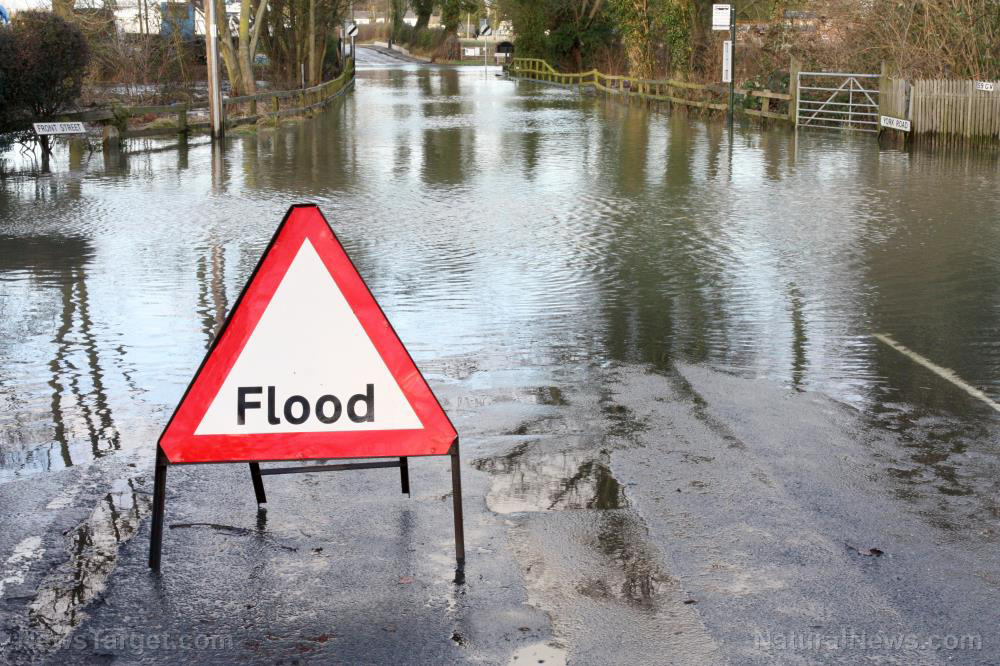Hurricane Ian aftermath: Floridians grappling with spread of flesh-eating bacteria
10/20/2022 / By Mary Villareal

Communities in Florida are now facing a new range of challenges following the wrath of Hurricane Ian. Recovery efforts are underway, but along with property damage that rendered homes inhabitable, thousands of displaced residents across the state are now grappling with serious environmental hazards that could pose serious health threats.
Hurricane Ian made landfall in Lee County on September 28 as a category 4 hurricane and officials now say that the storm surges and subsequent flooding led to a spike in potentially deadly infections that were caused by Vibrio vulnificus, a bacterium found in warm, brackish water that usually affects humans who come in contact with raw or undercooked seafood.
It can also enter the body through cuts and other open wounds, which can cause possibly life-threatening skin infections.
V. vulnificus is also informally described as “flesh-eating” bacteria because primary infections of the skin can devolve quickly into necrotizing fasciitis, which is a rare condition that causes tissue breakdown that could require amputation to prevent further spread.
The Florida Department of Health in Lee County stated in a news release that the infection itself, whether acquired through food or direct contact with contaminated water, has the potential to cause severe illness or death.
Health officials have already started seeing an increase in the bacteria’s infections. As of Oct. 14, there had already been at least 29 cases and four deaths confirmed by the county from infections, and all but two cases were diagnosed after the hurricane.

Sewage spills caused by Hurricane Ian likely increased bacteria levels
Florida’s health department has been seeing an increase in cases of the flesh-eating bacteria as a result of exposure to the flood and standing waters following the hurricane. It reminded citizens to “always be aware of the potential risks associated when exposing open wounds, cuts or scratches on the skin to warm, brackish or saltwater.
“Sewage spills, like those caused by Hurricane Ian, may increase bacteria levels. As the post-storm situation evolves, individuals should take precautions against an infection and illness caused by Vibrio vulnificus,” the department’s statement went on.
People with weakened immune systems, especially those who suffer from chronic liver disease or take immunosuppressant medications, are at particular risk of developing serious complications from these infections.
Florida health officials also tracked confirmed cases of bacterial infections and related infections statewide.
Anyone with injuries that have been in contact with floodwater is encouraged to immediately clean their wounds or cuts with soap and clean water. A waterproof bandage could also help in the process.
Florida health department spokesperson Jae Williams said cases are actually declining since the storm, which is a good thing.
He noted that infections are “very prevalent with flooding,” which also led to an “astronomical record amount of flooding.” (Related: Post-flooding fear in Texas and Florida as risk of contracting DEADLY rare brain-eating bacteria rises dramatically.)
Vibriosis causes an estimated 80,000 illnesses and 100 deaths in the U.S. every year, according to the Centers for Disease Control and Prevention website.
Infectious Disease specialist Mary Beth Saunders said it is important for people to understand that while standing water has receded, the same bacteria in the water could remain ln the debris piled up in the aftermath of the storm. She suggested that those moving debris should protect themselves with long sleeves, long pants and gloves. If a puncture or wound is sustained, it is best to wash the area immediately with soap and water.
Watch the video below for more information about hurricanes and the aftermath of Hurricane Ian.
This video is from the alltheworldsastage channel on Brighteon.com.
More related stories:
Woman dies of flesh-eating bacteria after wading through flood waters in storm-ravaged Houston.
Man who helped repair homes damaged by Hurricane Harvey dies from flesh-eating bacterial infection.
Sources include:
Submit a correction >>
Tagged Under:
This article may contain statements that reflect the opinion of the author




















